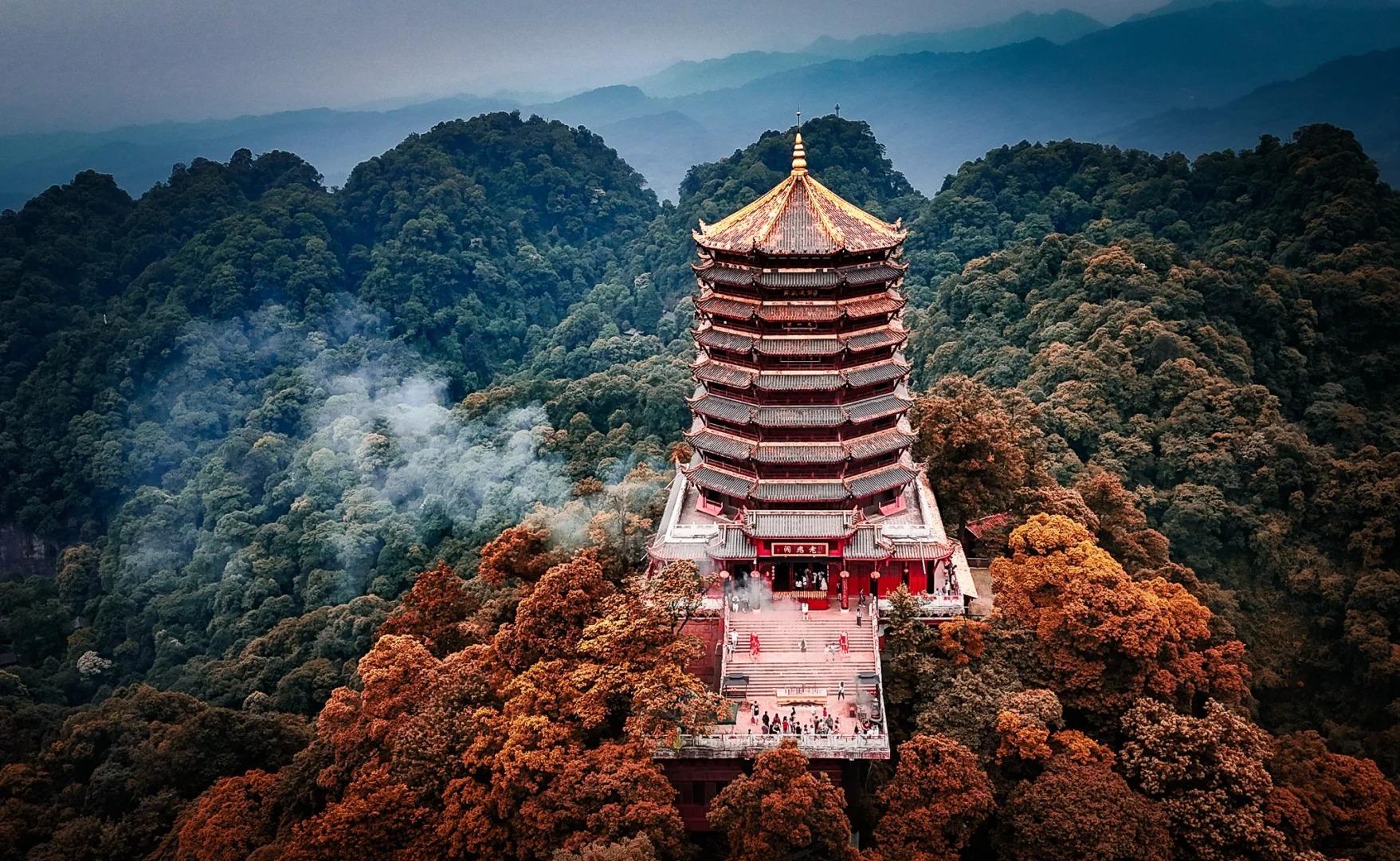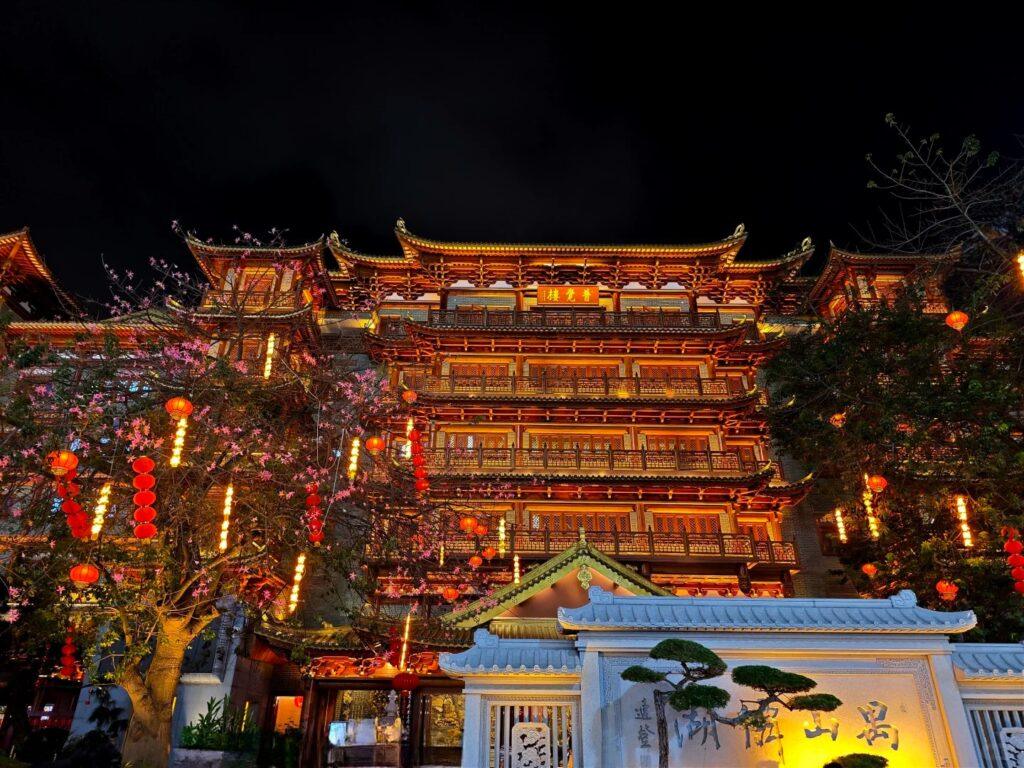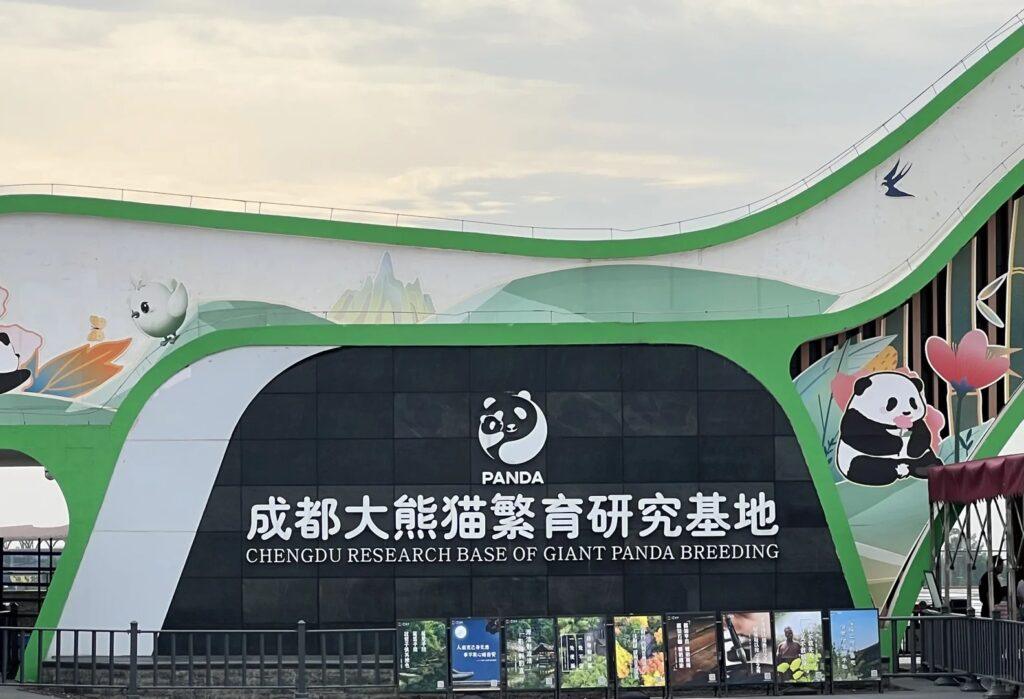Visiting Information
| Information | Details |
|---|---|
| Chinese Name | 青城山 (Qīngchéng Shān) |
| Location and Address | Dujiangyan City, Chengdu, Sichuan Province, China |
| Opening Time/Hours | 7:30 AM – 6:30 PM (April to October) 8:00 AM – 6:00 PM (November to March) |
| Entrance Fee | 90 CNY (Front Mountain) 20 CNY (Rear Mountain) Cable car fees are separate |
| How to Get There | By Metro: Not available By Bus: Take bus 902 from Chadianzi Bus Station in Chengdu to Qingcheng Mountain By Taxi: About 1.5 hours drive from Chengdu city center |
| Best Time for Visit | March to November, with April-May and September-October being ideal |
| Contact Info | Phone: +86 28 8788 5111 |
Overview
Mount Qingcheng, located in Dujiangyan City near Chengdu, Sichuan Province, is one of the most important centers of Taoism in China. Known for its lush greenery, peaceful atmosphere, and numerous Taoist temples, it is recognized as a UNESCO World Heritage Site along with the nearby Dujiangyan irrigation system. The mountain is divided into two parts: the more popular Front Mountain (前山) and the more secluded Rear Mountain (后山), offering visitors a blend of natural beauty, historical significance, and spiritual exploration.
Historical Background
Mount Qingcheng has a history dating back over 2,000 years. It is considered one of the birthplaces of Taoism, with the religion’s founder, Zhang Daoling, said to have founded the doctrine of Tianshi Dao (Way of the Celestial Masters) here in 142 CE. Throughout its history, the mountain has been an important site for Taoist practice and study, attracting numerous scholars and practitioners. The construction of temples on the mountain began during the Jin Dynasty (265-420 CE) and continued through subsequent dynasties, resulting in a rich tapestry of Taoist architecture and culture that persists to this day.
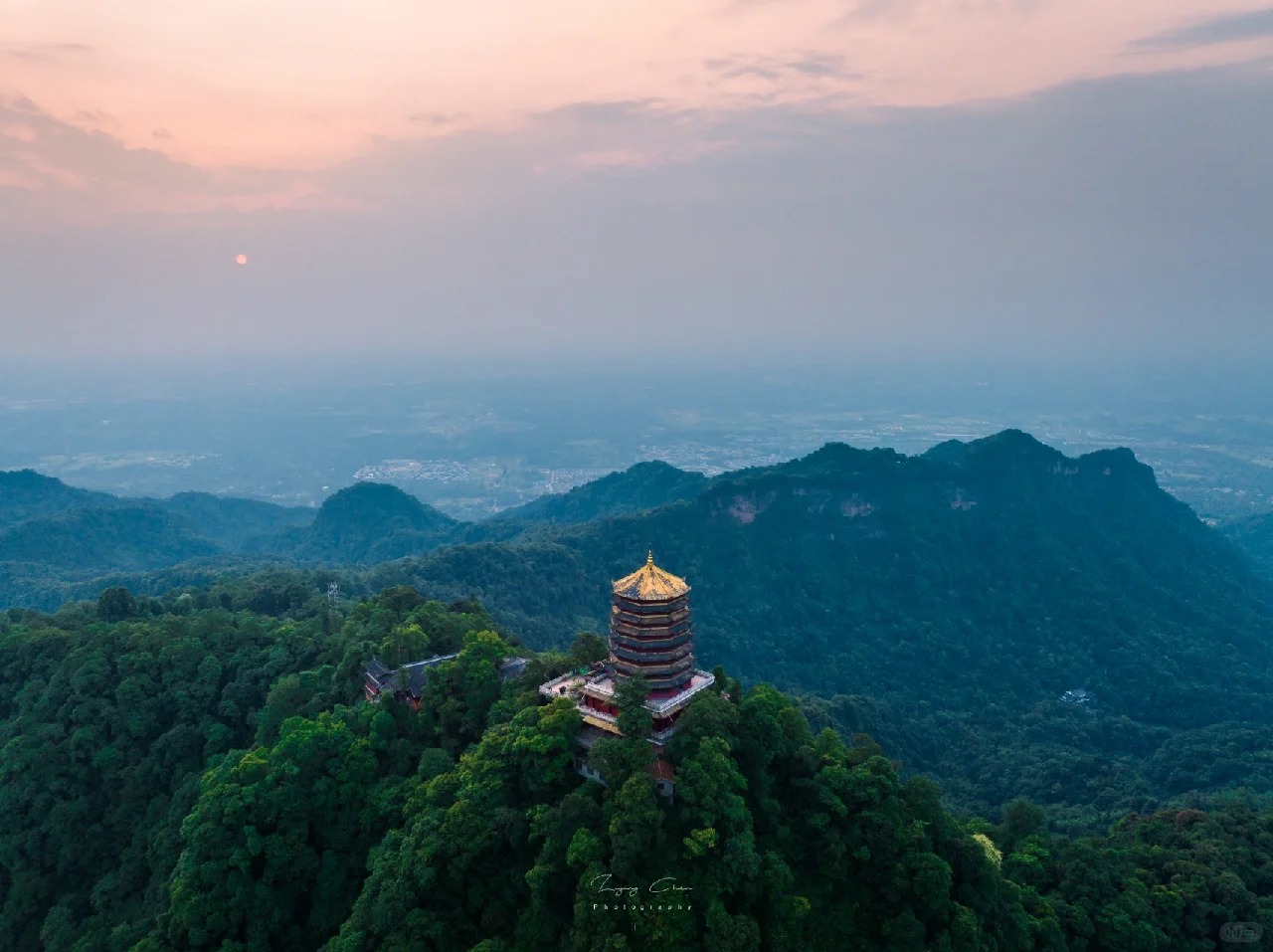
Architectural Features
- Jianfu Palace: Located at the foot of Mount Qingcheng, Jianfu Palace serves as the entrance to the mountain. Originally built during the Tang Dynasty, it has been rebuilt and expanded over the centuries. The palace features traditional Chinese architecture with upturned eaves and intricate woodcarvings, setting the tone for the spiritual journey up the mountain.
- Shangqing Palace: Situated near the summit of the Front Mountain, Shangqing Palace is one of the most important Taoist temples on Mount Qingcheng. Dating back to the Jin Dynasty, it has been rebuilt several times, with the current structure primarily from the Qing Dynasty. The palace complex includes several halls dedicated to different Taoist deities and offers panoramic views of the surrounding landscape.
- Tianshi Cave: This natural cave is believed to be where Zhang Daoling practiced and taught Taoism. The cave has been modified over the centuries with the addition of stone steps and railings to make it accessible to visitors. Inside, there are inscriptions and small shrines, creating a mystical atmosphere that reflects its spiritual significance.
- Laojun Pavilion: Located at the summit of the Front Mountain, Laojun Pavilion is dedicated to Laozi, the founder of Taoism. The pavilion offers stunning views of the surrounding mountains and valleys. Its architecture exemplifies traditional Chinese mountain temple design, with multiple tiers and ornate decorations.
Cultural Importance
Mount Qingcheng holds immense cultural importance as one of the cradles of Taoism in China. Its temples and natural landscapes have inspired countless poets, artists, and philosophers throughout Chinese history. The mountain embodies the Taoist principle of harmony between humans and nature, reflected in the integration of its temples with the natural environment. As a center of Taoist learning and practice, Mount Qingcheng has played a crucial role in the development and preservation of Taoist traditions, including meditation techniques, alchemical practices, and philosophical teachings. Today, it continues to be an important pilgrimage site for Taoists and a symbol of China’s rich spiritual heritage.
Surrounding Attractions
- Dujiangyan Irrigation System: Located about 10 kilometers from Mount Qingcheng, the Dujiangyan Irrigation System is an ancient engineering marvel that has been functioning for over 2,000 years. Built in 256 BCE, it is the oldest non-dam irrigation system in the world and continues to provide water to the Chengdu Plain. Visitors can explore the various components of the system, including the Fish Mouth Levee and the Flying Sand Fence, while appreciating its historical and technological significance.
- Tai’an Ancient Town: Situated at the foot of Mount Qingcheng, Tai’an Ancient Town offers a glimpse into traditional Sichuan architecture and lifestyle. The town features well-preserved buildings from the Ming and Qing dynasties, including residences, temples, and ancestral halls. Visitors can wander through its narrow streets, sample local cuisine, and experience the slower pace of life in a historic Chinese town.
- Two Kings Temple: Located near Dujiangyan, the Two Kings Temple is dedicated to Li Bing and his son, the engineers behind the Dujiangyan Irrigation System. The temple complex includes various halls and pavilions showcasing traditional Sichuan architecture. It serves as both a historical site and a place of worship, offering insights into the region’s water management history and local culture.

Photography Opportunities
- Misty Mountains: The lush, forested slopes of Mount Qingcheng often become shrouded in mist, especially in the early mornings or after rain. This creates ethereal scenes that are perfect for atmospheric landscape photography. The interplay of light and mist among the trees and temples offers countless opportunities for capturing the mountain’s mystical essence.
- Ancient Temples: The numerous Taoist temples on Mount Qingcheng provide excellent subjects for architectural and cultural photography. From the intricate details of wooden carvings to the sweeping rooflines set against mountain backdrops, photographers can capture the essence of traditional Chinese religious architecture. The interiors of temples, with their statues, incense, and devoted practitioners, offer chances for evocative documentary-style shots.
- Panoramic Vistas: Several viewpoints along the hiking trails and especially at the summit offer spectacular panoramic views of the surrounding landscape. These locations are ideal for wide-angle shots that capture the vastness of the mountain range and the sea of clouds that often blankets the valleys below. Sunrise and sunset can be particularly dramatic from these vantage points.
- Flora and Fauna: Mount Qingcheng’s diverse ecosystem provides ample opportunities for nature and macro photography. The mountain is home to a variety of plant species, including ancient ginkgo trees and colorful wildflowers. Patient photographers may also capture images of the local wildlife, such as birds and small mammals that inhabit the forests.
Modern Importance
- Cultural Heritage Preservation: As a UNESCO World Heritage Site, Mount Qingcheng plays a crucial role in preserving China’s Taoist heritage and traditional culture. The ongoing maintenance and restoration of its temples and natural landscapes ensure that future generations can continue to experience and learn from this important historical site. The mountain serves as a living museum of Taoist architecture, art, and practices.
- Tourism and Economic Impact: Mount Qingcheng has become a major tourist attraction, contributing significantly to the local economy of Dujiangyan City and the broader Chengdu area. The influx of domestic and international visitors supports local businesses, creates job opportunities, and drives investment in infrastructure and services. The mountain’s popularity has also led to the development of eco-tourism initiatives, promoting sustainable travel practices.
- Environmental Conservation: The protected status of Mount Qingcheng as part of a UNESCO World Heritage Site has heightened awareness of environmental conservation in the region. Efforts to maintain the mountain’s ecosystem, including its forests and water resources, contribute to broader environmental protection goals. The mountain serves as an important green space and biodiversity hotspot in an increasingly urbanized region.
- Spiritual and Wellness Tourism: In the modern era, Mount Qingcheng has become a popular destination for those seeking spiritual renewal and wellness experiences. The mountain’s Taoist heritage, combined with its natural beauty, attracts visitors interested in meditation, traditional Chinese medicine, and stress relief. This trend has led to the development of wellness-focused accommodations and programs in the area, blending ancient wisdom with contemporary wellness practices.
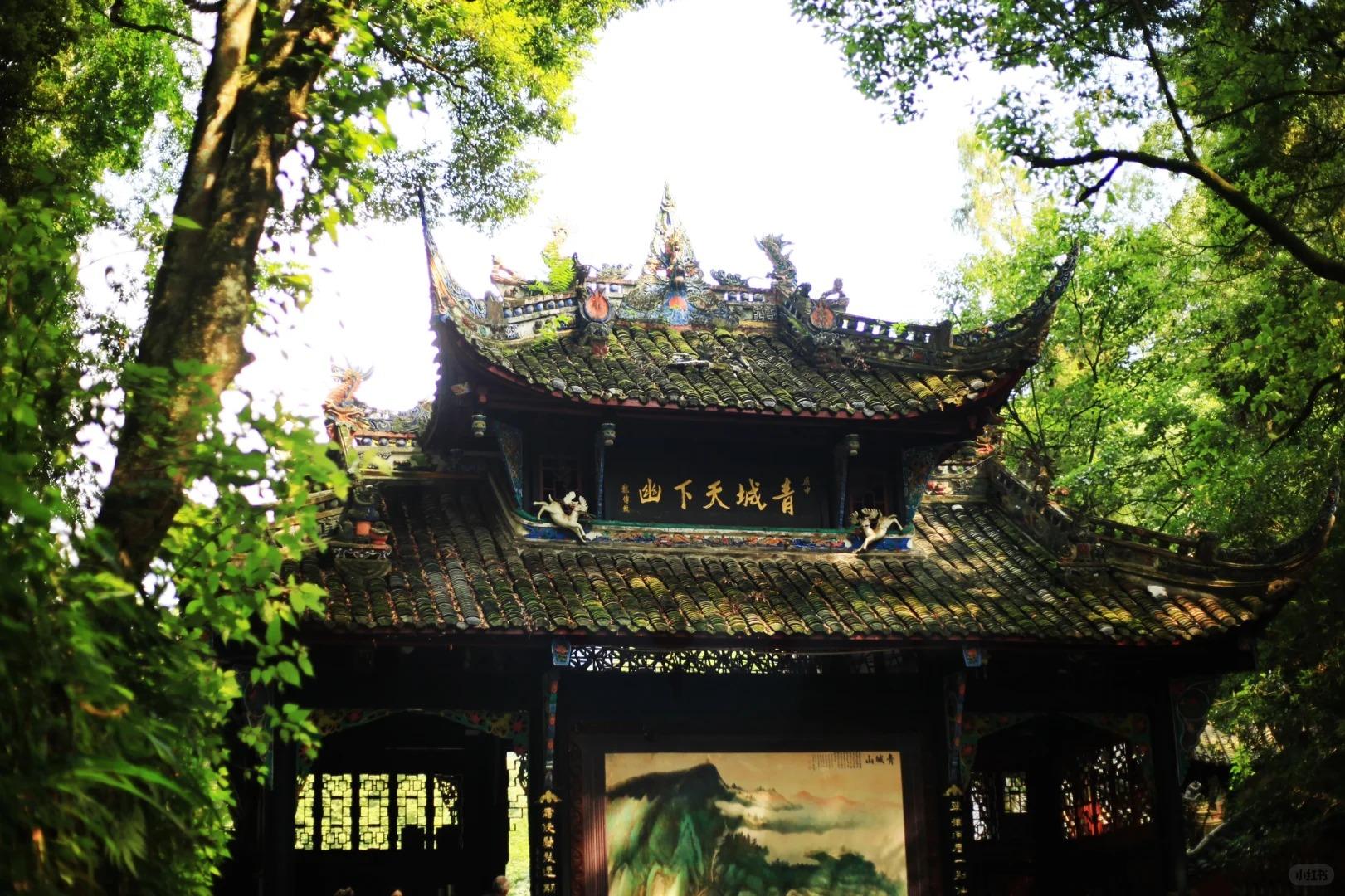
FAQ
- What is Mount Qingcheng famous for?
Mount Qingcheng is famous for being one of the birthplaces of Taoism in China, its beautiful natural scenery, and numerous ancient Taoist temples. It’s also recognized as a UNESCO World Heritage Site along with the nearby Dujiangyan irrigation system. - What’s inside Mount Qingcheng?
Inside Mount Qingcheng, you’ll find lush forests, numerous Taoist temples and pavilions, including Jianfu Palace, Shangqing Palace, and Laojun Pavilion. There are also natural features like Tianshi Cave, hiking trails, and cable car systems for easier access to different parts of the mountain. - Is Mount Qingcheng free?
No, Mount Qingcheng is not free. There is an entrance fee of 90 CNY for the Front Mountain and 20 CNY for the Rear Mountain. Additional fees apply for cable car rides. - Is Mount Qingcheng worth visiting?
Yes, Mount Qingcheng is definitely worth visiting. It offers a unique combination of natural beauty, historical significance, and spiritual atmosphere. It’s an excellent destination for those interested in Chinese culture, Taoism, hiking, or simply enjoying scenic landscapes. - What to do in Mount Qingcheng?
In Mount Qingcheng, you can hike the mountain trails, visit ancient Taoist temples, enjoy panoramic views, learn about Taoist culture and history, take cable car rides, explore caves, practice meditation or tai chi, and enjoy the natural scenery. - How do I get to Mount Qingcheng in the local city?
To get to Mount Qingcheng from Chengdu (the nearest major city):
1. By Bus: Take bus 902 from Chadianzi Bus Station in Chengdu directly to Qingcheng Mountain.
2. By Train: Take a high-speed train from Chengdu to Qingchengshan Station, then take a short taxi ride to the mountain entrance.
3. By Car or Taxi: It’s about a 1.5-hour drive from Chengdu city center to Mount Qingcheng. - How to visit Mount Qingcheng?
To visit Mount Qingcheng:
1. Plan your visit during the best months (March to November).
2. Decide whether to visit the Front Mountain, Rear Mountain, or both.
3. Arrive early to make the most of your day.
4. Choose between hiking or taking cable cars to various points.
5. Wear comfortable shoes and bring water, as there’s a lot of walking involved.
6. Allow at least a full day to explore the main sights.
7. Consider joining a guided tour for deeper insights into the mountain’s history and Taoist culture.
8. Respect the religious sites and natural environment during your visit.



